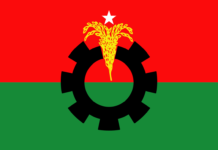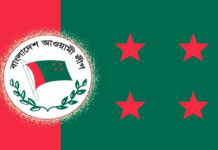How to Sway a Baboon Despot
What other species can teach us about democracy

Early last year, more than 70 years after its publication, George Orwell’s Animal Farm appeared on The Washington Post’s best-seller list. A writer for the New York Observer declared the novel—an allegory involving a government run by pigs—a “guidepost” for politics in the age of Donald Trump. A growing body of research, however, suggests that animals may offer political lessons that are more than allegorical: Many make decisions using familiar political systems, from autocracy to democracy. How these systems function, and when they falter, may be telling for Homo sapiens.
As in human democracies, the types of votes in animal democracies vary. When deciding where to forage, for instance, Tonkean macaques line up behind their preferred leader; the one with the most followers wins. Swans considering when to take flight bob their heads until a “threshold of excitability” is met, at which point they collectively rise into the sky. Honeybee colonies needing a new home vote on where to go: Thomas Seeley, a Cornell biologist, has found that scout bees investigate the options and inform the other bees of potential sites through complex “waggle dances” that convey basic information (distance, direction, overall quality). When a majority is won over by a scout’s campaign, the colony heads for its new home.
Research also shows that animal democracies, like human ones, can go awry. For instance, Seeley found that bees sometimes chose a mediocre—even terrible—site over an objectively better option. When this happened, it was invariably because they had “satisficed”—that is, settled for a plausible choice that came in early, rather than waiting for more options. Seeley told me he once saw several bees return to a hive and perform “unenthusiastic, lethargic” dances. With no great choices, they began coalescing around the best of the middling ones. At the last minute, though, “one bee came back, and she was so excited,” Seeley said. “She danced and danced and danced. She must have found something wonderful. But it was too late.” The bees had picked their candidate; momentum carried the day.
Group decisions need not come easy—in fact, clashing perspectives may lead to superior outcomes. Seeley notes that bees make wiser decisions when they “have different backgrounds, bodies of knowledge, and experiences.” For example, nest-site scouts who have worked as foragers may explore areas where they’ve previously foraged—areas other scouts might not investigate. Variety among scouts thus encourages a wider array of potential sites, and more-thorough vetting of options. As long as animals share the same broader goal, a diversity of viewpoints does not tear their society apart but strengthens it, leading to better results for all.
The article appeared in the Atlantic May 2018 issue








